The World Nomads Podcast: Travel to Guatemala During COVID-19
In this episode, we revisit Guatemala sharing what you need to know for visiting this destination during COVID-19, including specific information for children.
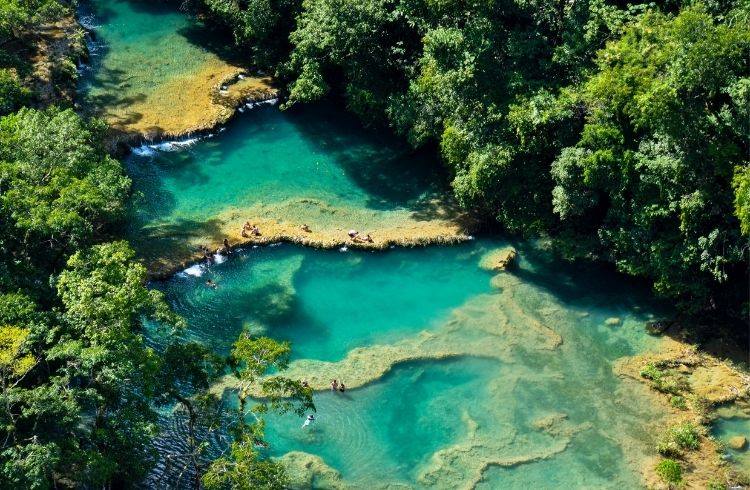 Photo © Getty Images/hbrizard
Photo © Getty Images/hbrizard
Listen Now
The World Nomads Podcast: Traveling during COVID-19
With COVID-19 still affecting the way we engage with the world, it’s important to plan wisely and travel responsibly, both for your own safety and that of the places you visit. But as we reengage with the world, you're likely planning vacations not far from home. World Nomads can help by providing travel safety tips, inspiring content, and travel insurance designed to protect you while traveling. In March 2020, Guatemala closed its borders but in October 2020 reopened to travelers.
Before you buy a travel insurance policy, check your government travel warnings and health advice – there may be no travel insurance cover for locations with a government travel ban or health advice against travel.
What’s in the episode
00:22 Where is Kim?
01:54 COVID-19 restrictions in outback Australia
04:11 A Little Adrift
06:30 The great Guatemalan drug bust
10:11 Why Shannon loves Guatemala
12:52 What AirTreks is all about
15:36 Pack your hiking boots
18:26 Shark and ray conservation in Belize
24:18 The discovery of a new species
27:48 Next week
Quotes from the episode
"...for people who travel with a want to understand the culture and to understand any different culture, it's right there in your face, and it's very different than the main Hispanic culture that's sort of across the region." - Shannon
"Picaya is quite close to Guatemala City. I think it's one of the most visited volcanos in Guatemala because it is easy to get to."- Sarah
"But the biggest threats to sharks and rays in our region is actually fisheries. And that's what we're really trying to work against and mitigate the threat from by encouraging people to take part in this incredible, broad, citizen science research." - Dr. Rachel G.
Who is in the episode
In 2013 National Geographic named Shannon O’Donnell Traveler of the Year for her work in responsible tourism.Check out her website A Little Adrift, a resource point to motivate and encourage other travelers through stories, advice, and photography.
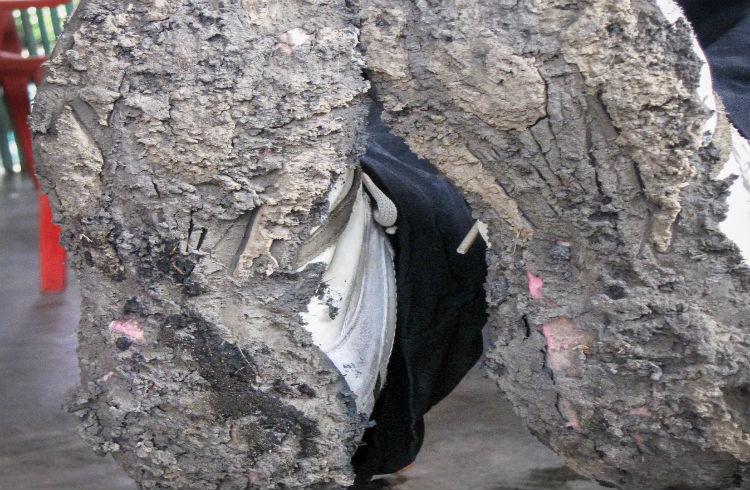
Our Footprints Network is currently funding 10 projects including shark and ray conservation in Belize. Dr. Rachel Graham takes us through the background and provides an overview of the project funded by micro-donations.
Rachel is also the Founder and Executive Director of MarAlliance, whose team recently discovered a new shark species
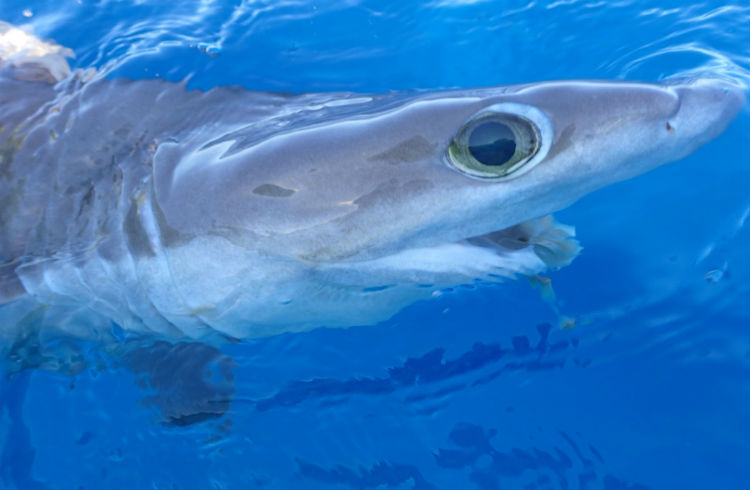
Sara Tiffany is the Director of Projects for AirTreks, a leader in multi-stop international travel, especially complex routes.
AirTreks is also one of the few companies to accept cryptocurrency. Read how they helped Simon plan his trip using bitcoin.
Kim and her husband Andy have hit the road in their converted van for an adventure or adVANture during COVID-19. At the time this episode was recut they were in Bourke camping by the banks of the Darling River, or Barka as First Nations people refer to it. Bourke was the home of Afghani camel traders, part of Australia's pioneering and early transport history.
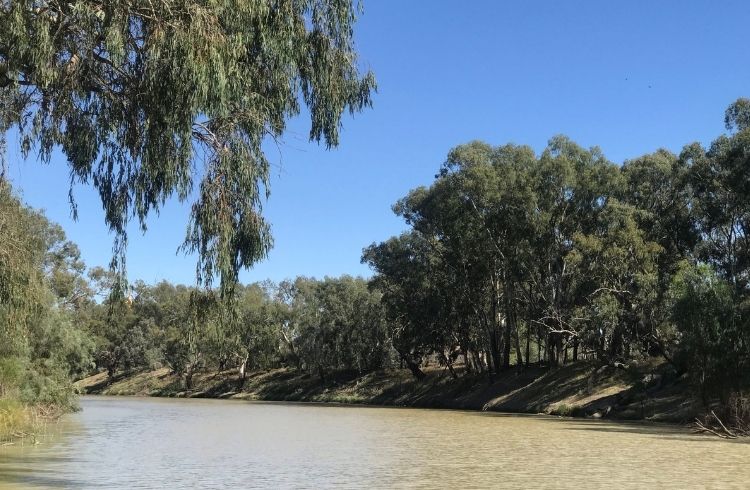
Resources & Links
- COVID-19 in Guatemala.
- Guatemala Travel Alerts and Warnings
- Kamran Ali is a photographer who quit his job as a software developer in Germany and set out to explore the world by bicycle. Take a look at his pics of Guatemala in this photo essay.
- Travel safety Guatemala
- You can now find the World Nomad’s Travel Podcast on Eavesdrop! A free iOS app that makes podcasts searchable by users.Download here.
Help us spread the word
We’d love it if you could please share #TheWorldNomadsTravelPodcast with your twitter followers and head over to Facebook and join the World Nomads Travel Podcast group.
If you liked this episode please head to Apple Podcasts and kindly leave us a rating (it really helps), review, and of course, subscribe so you don’t miss an episode.
We use the Rodecaster Pro to record our episodes and interviews when in the studio, made possible with the kind support of Rode.
Kim: Hi Kim and Phil with you and yes, I am still on the road this time recording from Bourke, an outback town in New South Wales here in Australia on the Darling River, or Barka as it's known by First Nations peoples. It's rich in Aboriginal culture with 21 recognized indigenous language groups. In fact, head to the World Nomads Facebook Group to follow updates on my travels, a link in show notes. Speaking of updates, Guatemala has reopened its international airport for travelers and is keen to revive its tourism sector and this is what we know.
Phil: PCR tests are required except for children under 10.
The test must be negative and take no longer than 72 hours prior to your flight. Antigen tests are also permitted if PCR is not possible. It’s been reported if you don’t have a test you have to adhere to a 14-day quarantine or be tested in a health center under the leadership of the ministry of public health.
Kim: There’s also a health pass form that arrivals must fill in and we will have a link to that in show notes.
Phil: A national curfew is still in effect from 9 pm to 4 am and you will be fined if you don’t adhere to social distancing rules and the use of masks in public. Otherwise, if you can fly and are healthy you are good to go.
Kim: Well let’s revisit some parts of our previous episode featuring Guatemala. In 2013, Shannon O'Donnell was named National Geographic's Traveler of the year for her work in responsible tourism. She started traveling in 2008 and is here to tell us about A Little Adrift, which is how we came to find her.
Shannon O.: It started in 2008. It's really hard to remember what it was like to try to find travel information on the internet. But there wasn't a lot about planning around the world trip, and so when ... I was a solo female, figuring out what it was going to be like to be on the road for an entire year. At the time I thought it going to be just a year. But there wasn't information. So, A Little Adrift started as this way to document what you needed to know to travel better. To travel around the world. All the information that not just a solo person would need to know.
And I already had a service focus in my life, and so, I had planned on volunteering and supporting community-led projects, and that led to a shift in A Little Adrift over the years. Once there was a lot of information out there on my blog and others, I started showing people how you could travel with a focus on helping. Like, travel as a force for good. And that's what A Little Adrift is today.
Kim: We'll share the site, obviously, in show notes, but it has a comprehensive list of resources there, from responsible travel to planning your travel, digital nomads, and bloggers. But we, specifically, not only did we not want to [inaudible 00:03:16] A Little Adrift, wanted to chat with you about Guatemala.
Shannon O.: Yes, which is one of my favorite countries in the world. It's such a beautiful place.
Phil: Why? What's so good about it?
Shannon O.: You know, it's very different than the culture that you find elsewhere. So, I had traveled overland from Mexico and Belize, and Guatemala felt like a warm hug. The Mayan culture is right there and evident, and so, for people who travel with a want to understand the culture and to understand any different culture, it's right there in your face, and it's very different than the main Hispanic culture that's sort of across the region. You really get to feel like there are opportunities to learn more, and help support the Mayan communities, and hike through ... it's just beautiful, too. So, you get to hike through the Highlands, and it's an absolutely stunning country.
Kim: We'll get to its beauty, but one of your blogs gets a lot of "Thank you, Shannons. Thank you for sharing this story." It was when you were out, and one of the waiters came up and said, "If you have drugs, flush in the toilet now. Police do drug raids next door. Do now." Take us through that story.
Shannon O.: Oh, so, that's really funny, and there is a drug culture around Lake Atitlán, especially, and so, this is what a lot of people know Central America for. But some backpackers go for, you know, some fun, to the lake area. There was a movie night, so I was there sitting at an English movie night at one of the coffee shops. A couple of people stayed, but there was this massive sweep, actually, it was a drug sweep. Although, they didn't find a lot of drugs, because there was this message that went through the backpacker area first. They started taking anybody who didn't have their passport on them and taking them into police custody until they could find their passport. The moment I heard that something was going around, I was like, "Yeah, I'm out. Why would I sit here? Like, the movie is really good and all, but why would I sit here?" And so-
Phil: What was the movie? I want to know what's the movie that you go to when you, where it's enhanced by a backpacker experience?
Shannon O.: You know, I don't remember, and then I see the drug [crosstalk 00:05:16]-
Phil: Oh, and so the drugs were good, then.
Kim: Shannon would never do such a thing, would you?
Phil: No, no.
Shannon O.: No, no, never. But-
Kim: She didn't run because she had drugs on her.
Phil: She had her personal ... okay, I'm with it now. Right on. We go to it.
Kim: No passport.
Shannon O.: Because, apparently, you're supposed to carry your passport. This was the first time, so this was 2010, I had never heard before. I had already been on the road two years. I'd never heard that you're supposed to have your passport on you in a lot of foreign countries.
Phil: Yeah. Yep, yeah. Even like France, I think. Even places like that. So, my travel insurance safety tip of the day. If you've got a copy of your passport, then if you get pickpocketed, you don't lose your passport. But if you've got the information page inside the passport as a photocopy, that usually satisfies the local police.
Kim: Well, that's one of Shannon's tips-
Phil: Oh, good.
Kim: ... just to make sure that you always carry at least a photocopy of your passport. And I think in that particular blog you wrote that there were around 40 backpackers that were put into jail?
Shannon O.: And one of them was my roommate. So, I went home, and I didn't really know what was happening. Right? I just sort of .. I'm not big, you know, I'm not going to take a stand. I don't know. I'm in a foreign country. I hear that something's going around. I just walked out of the back door, and I walked home. And everyone who didn't, basically, went to Guatemalan jail, and my roommate was one of those. I didn't know her. I was at a hostel, and we just had a two-bedded dorm.
And so, in the middle of the night, maybe 3:00, 4:00 a.m., somebody came and knocked on my door, and said, "Your roommate wants you to go through," because I wouldn't let them in, obviously. And they said, "Your roommate wants you to go through her backpack." And they named the pocket where her passport was, which sort of like gave me a hint that they were who they were. And so, I went through and gave them her passport, and she got out.
Phil: So, is that because of corruption? Was it a shakedown? Was it, you know, an unofficial fine that you had to pay to get away, or were they genuinely enforcing the law?
Shannon O.: Oh, I mean, it was both. Genuinely, a lot of backpackers in this town do have drugs on them, and so, legitimately, they're enforcing a lot of ... But it was absolutely a shakedown where you ... If you're taking backpackers who are watching a movie because they don't have their passport, I don't feel like that's ... She did have to pay a fine. Once that happened, I left. Two days later I was like, "Oh, I think I'm done with Lake Atitlán."
And I went north, and this is in the Guatemalan Highlands, and this is not as pretty of a town as Antigua, so I'm not selling you at this point. Right? It's like it's the beautiful Highlands, but it's a real sort of, and this would be terrible to say, but it is a little bit more grungy town. It's a very grittier town. But it also has a lot of integration with the indigenous communities, and it's from here that you can organize treks into the Highlands, and I did some service projects. All of the language schools have a real focus on programs that support the indigenous communities with their money. All of the drug culture that we just talked about, all of that is gone at that point, and you are just in this city that's really welcoming for tourists.
Kim: So, if we have scared anyone off, you can actually avoid being part of that drug culture.
Shannon O.: Absolutely. And there are so many other areas I know we're going to talk about, I just love it. Like I'm saying, I'm fangirling all over it.
Phil: Yeah. What does it most look like?
Shannon O.: It's very green. And because Guatemala has many volcanos, the volcanos are closer to Lake Atitlán and that sort of thing, but there are some peaks that you can reach around. So, just think really, really green mountains, not so cold that you want to die inside. So, you can go camping, you can be in these rural, indigenous villages if you take a guide and a trek out there. But I find it more enjoyable. So, I've done the Nepal trek, and you know, sitting in my tiny teahouse wishing that I had 10 more blankets, and it's not that.
Kim: Now you mentioned volcanos, and in June, and we reported in the podcast in our travel news that there was a volcano eruption that killed a lot of the locals. But if you google Guatemala and things to do, one of the top things is to actually roast a marshmallow over a volcano. Is this something that you've done, and would you recommend it?
Shannon O.: I have done it, but my Central America travels, a lot of it, I was two years in, and in hindsight, I realized a lot of it is quite risky. So, one of those being roasting a marshmallow on a volcano. There is an element of risk. When we got down the side of the mountain, one of my friends who I had met on the trek, on this trek up the side of the mountain, she was wearing trainers, just like regular sneakers, and I was wearing hiking boots. And so, something I had not noticed is just how hot the rocks were. Like, you could feel the heat. We did see some lava. It was a little bit further up than some people. Like, we were not close enough to poke it with a stick, but we were able to roast some marshmallows in the crevices. So, you knew there was a lot of heat coming up. But when she got down the side of the mountain, she only narrowly missed like massive blisters on her feet because she had, all the rubber was gone. I could see her socks. She was walking down that barefoot.
Kim: Ouch. Memo to self, Phil?
Phil: Yeah.
Kim: Don't climb a volcano with rubber-soled shoes.
Phil: Or have very thick socks on, as well, then.
Kim: But there's a peek of the shoes, or what's left of them.
Phil: I know.
Kim: She's shown us.
Phil: I know, it's pretty amazing. It's like, that must have hurt. It must have.
Kim: Yeah, with her pretty hot pink socks. I reckon they would have been hot pink. Red or pink. That is in show notes.
So, when you're planning an itinerary, what you really want to be doing is chatting to somebody who knows what they're talking about. This is why we're catching up with Sarah from AirTreks because they plan itineraries, but they're all travelers. Am I right there, Sarah?
Sarah: Yeah, that's absolutely right. All of our travel planners are experts because they've actually done it. Well, what we do is we customize every trip based on what each particular person, or family, or couple wants to get out of their experience. So, we listen, we talk with people, we meet with them. They talk with one of our travel planners. They tell all about the things that they want to hit on their trip, and you know, kind of how they want to have their experience. Some people want to do it really bare bones. They want to stay with the locals. They want to travel for as long as possible, so they're really working on a budget.
And then you have other people who maybe have less time, maybe have some kind of situation where they need to be in a place that's more comfortable, maybe they're traveling for work. So, we customize every itinerary based exactly on what you specifically want to do.
Kim: One of the examples you gave to me was if you're planning a trip from the U.S. to Peru to walk the Inca Trail to Machu Picchu, which we've said in previous episodes is almost been loved to death. Why not plan a stopover in Guatemala, and hike Pacaya?
Sarah: Yeah, that's exactly right. So, I think a lot of people, when they're thinking about traveling to South American, they think, "Well, I just want to get where I'm going and do my trek there, a couple of popular ones." Machu Picchu is popular, also Ciudad Perdida in Colombia is really popular.
And Guatemala is a great stopover on your way down to either one of those treks. Because Guatemala is a country that's really great to see by land. It's actually when we talk about people going to that region of Central America, a lot of the time we'll tell them don't fly into the one place you want to see. Fly into one city and fly out of another, because there are so many remote and beautiful places in Guatemala that you can't get to by air.
So, it's nice to say, start in southern Mexico, travel around Chiapas. Go by land through Guatemala to El Salvador, and then fly from there. So, not only could you stopover in Guatemala City on your way down to Peru or Colombia, but you could get three additional countries in there.
Kim: You don't have to spend a lot of money to have a fantastic experience.
Sarah: Well, that's exactly right. I was looking at trips when I knew that I was going to be talking with you guys, I was looking at some trips that included Guatemala, and one of the sample trips we have up on our site right now is, it's seven cities in South America, including Guatemala City. So, Guatemala City; Bogota, Colombia; Santiago, Chile; Buenos Aires, and Lima, and that's starting and ending in Miami. And it's between $1,600 and $1,700. So, you've got seven cities for $1,700. It's pretty affordable.
Phil: But tell us about Pacaya, then. You're comparing it to Machu Picchu. Tell me about it.
Sarah: Well, obviously, they're totally different. But if you have your hiking boots in your bag. Right? Pacaya is a volcano. I think it's actually one of several active volcanos in Guatemala. I'm not an expert on Guatemalan volcanos.
Kim: There are a lot, and there are a few that are-
Phil: There are a lot, and they keep going off.
Kim: Yes.
Phil: Anyway.
Sarah: So, that's one way to dust off your hiking boots. Hopefully, you've broken them in before your trip down. It's actually quite close to Guatemala City. I think it's one of the most visited volcanos in Guatemala because it is easy to get to.
Kim: One of the things I love about your site is it's very thorough, Phil. There's five great around the world itineraries. There's how much does traveling the world really costs per day? But in the blog section, there are some really great stories. Like the single mother who took her family around the world. And this one took my attention. The first AirTrek ever booked with Bitcoin.
Sarah: That's-
Kim: How does that work?
Sarah: Well, just like buying anything else with Bitcoin. It's really funny, I would like to put a PSA out, "If you would like to buy travel with Bitcoin, you can come and talk with us." Because it's actually hard. There's not a lot of companies out there that do accept Bitcoin for travel purchases. And for us, being part of the blockchain movement was really important. We like to think about ourselves as a really modern travel agency. We like to be up on all of the different travel technology, and all of the best technology available to build these complicated itineraries. So, when we realized, "Oh, there's a way that people want to pay for these trips that we're not fulfilling." We changed that right away. So, we've sold a few trips with Bitcoin. I think the one that you're speaking of that's on our blog, we can just look. I think he had five to 10 stops all around the world, so-
Kim: He did. This is Simon.
Sarah: ... it's a great way to spend that money.
Kim: Well, Sarah, thank you so much for chatting with us. We'll have the AirTreks link in our show notes, and as I've kept saying, there's trip planner, there are specials, there are planning tips, and there is that blog with all those interesting stories. So, cheers to that.
Phil: And thanks for choosing World Nomads to partner with. We appreciate it.
Sarah: Thank you.
Kim: Absolutely. Phil, our Footprints Network has just celebrated over $4 million-
Phil: $4 million, I know.
Kim: ... in micro-donations.
Phil: I know. Unbelievable.
Kim: So, do you want to explain the Footprints Network?
Phil: Okay. It actually started after the 2004 Asian tsunami, and the founders of World Nomads said, "Well, what can we do? It's all very well and good donating money, but what can we do it in an ongoing way that's going to help community-based projects?" So, it started it's where every time when you go to make a purchase of a World Nomads travel insurance policy, you can add two bucks, or five bucks, or ten bucks to that, and it goes to this community-based project here. This one right here that I can see the picture of on the page.
Kim: Well, we-
Phil: So you know where your money's going.
Kim: We're actually funding 10 projects. We'll include a link in our show notes, including shark and ray conservation in Belize, which is about a seven-hour drive from Guatemala.
Phil: Okay.
Kim: So, we have Dr. Rachel Graham, who is going to take us through the background and provide us an overview of the project that she's part of which is funded by micro-donations. The Footprints Network. Hello.
Dr. Rachel G.: Hello. And first of all, congratulations on passing that $4 million goal. That's absolutely impressive. It just goes to show the power of a very, very large community globally to make things happen for good. It's brilliant.
Phil: Yeah. It is. It's quite an amazing thing.
Kim: Well, to helping you out, you are part of this shark and ray conservation in Belize. Firstly, why did you choose Belize for this project?
Dr. Rachel G.: So, you know, I've been living in Belize for 21 years now, and I've done a lot of work with sharks and rays, and even some other large megafauna, turtles and big finfish. All of these share very similar life histories that are very vulnerable to overexploitation, such as fishing, targeted fishing. They also inspire a lot of people. That's what people really come to scuba and snorkel with, and more.
And why I really wanted this project to be focused on Belize is we have the second largest barrier reef in the world, after your own in Australia. And our reef extends throughout the Mesoamerican region of Mexico, Belize, Guatemala, and Honduras. Almost 1,000 kilometers.
Kim: You mentioned Honduras, and in one of our earlier podcasts, we actually chatted to one of the scientists that had been part of capturing that photograph that went viral of the huge, what do you call it? What's the technical name?
Phil: Oh, I can't remember. That sort of massive-
Kim: Was it the giant-
Dr. Rachel G.: Plastics?
Kim: Yes.
Phil: That's it. That's the one.
Kim: Yes.
Phil: All that plastic.
Kim: Yeah, it's so-
Dr. Rachel G.: Yeah, plastic. So, what's happening there, it's really interesting, because you have the large current that's coming through from the Atlantic into the Caribbean. That's what's bringing all kinds of aspects like Sargassum and more, and you're seeing animals using that current, as well, in their migrations.
But when it hits northern Honduras, and that Gulf of Honduras beach, and between Belize, Guatemala, and Honduras, it creates this gyre. It's like a counter gyre. And what that does is that just concentrates a lot of the debris that's coming out of a lot of rivers in this particular area from southern Belize, Guatemala, and northwestern Honduras.
And so, what that lady came across was just this confluence of both current, gyre activity, and a lot of debris and plastics coming out of many of those rivers. And you know, those plastics actually have an impact on the marine wildlife that we work with, especially the sharks and rays. We have found plastics in these animals, and we're concerned about that.
But the biggest threats to sharks and rays in our region is actually fisheries. And that's what we're really trying to work against and mitigate the threat from by encouraging people to take part in this incredible, broad, citizen science research.
Kim: Yeah, explain the Citizen Science Project.
Phil: Yeah.
Dr. Rachel G.: So, you know, a lot of folks have these wonderful bird counts. Everybody goes out for the Christmas bird count, or, for example, Fiji has kind of laid the path with their shark count in Fiji, and everybody at a certain time of the year goes out and counts the sharks or counts the rays.
And we thought, here we still have considerable shark fisheries ongoing, and now they're including rays, as well. And you know, at the same time, these animals are bringing in absolutely millions in tourism. In fact, we did the survey, and one of the things that we're trying to do is, with this particular funding from World Nomads, we're hoping that we'll be able to do this large-scale, deep analysis of this incredible survey that we've done with so many visitors in Belize about their perceptions on sharks and more.
And so, what we're hoping to do is galvanize the tour operators, the guides, all the tourists, many of the thousands of students that we ever worked within Belize, and get them out there counting the sharks and the rays, and feeding in the data. And gaining a better understanding of hot spots for these animals, and really showing their interest, their care, and ultimately, their support for their survival.
Kim: So, you're the founder and executive director of the MarAlliance. Can you tell us about that?
Dr. Rachel G.: MarAlliance, I created in 2014 to be a nimble, and proactive international organization that would help to kind of define opportunities to help conserve large marine wildlife. So, sharks, rays, turtles, big finfish, like groupers, and other recreational, important recreational fish, many because they have the same life histories, are very vulnerable to targeted fishing, and they're also very important to the tourism industry.
So, really, now we've grown from four people in 2014, we're now 18. We are based in four countries, so, Belize, Honduras, Panama, and West Africa, Cape Verde. And it's been an incredible ride since 2014. We continue to grow, and you know, we're logging quite a few successes in terms of our research, in terms of our conservation work, and more.
And one of our most recent successes, actually, is the discovery of a brand new shark species. The Atlantic sixgill shark. And this is just par for the course for the work that we do in MarAlliance.
Phil: Okay. A big shark? Small shark?
Dr. Rachel G.: It's actually an incredibly cute little, big wide-eyed ... We can send you the picture of a shark.
Phil: Yes, please.
Kim: Yes.
Dr. Rachel G.: Yes? And, you know, I really want to give a big shout out to our technical coordinator, Ivy Baremore, who's running our deep sea and deep shark project, because she's the one who hauled it up, and tagged it, and really helped discover this animal.
Kim: So, is it fair to say then, that our Footprints Network has been responsible for uncovering a new species of shark?
Dr. Rachel G.: It can't be-
Phil: [inaudible].
Kim: Just wanted to get it right.
Dr. Rachel G.: [crosstalk].
Phil: And dunk him.
Dr. Rachel G.: I would love to be able to give you that credit, but I'm not [inaudible 00:34:59].
Kim: [inaudible] right.
Phil: The World Nomad shark.
Kim: Yeah, the World Nomad ... [inaudible 00:35:03] because he hasn't got a name. We could have named it, exactly. But the Footprints Networks has been, will you tell us how important to this particular project?
Dr. Rachel G.: So, we're just starting out with this project with the Footprints and World Nomads, and we're absolutely excited. We have not reached our target funding yet. And because we don't like to raise expectations with the communities and the people we work with, we're waiting to reach our target funding, and then we can kickstart this project. We're absolutely excited because, as I said, we are finding new species, we are discovering new behaviors, and everything, and I tell you, you never know what we're going to find, and what we might actually be able to ascribe or credit to World Nomads.
Phil: If somebody's traveling through the region, are they able to come and give a hand, or do you need people to come, like travelers to come and help you out in any way?
Dr. Rachel G.: Absolutely. So, basically, anybody who comes to Belize and is going to go and encounter sharks, they can go to the Hol Chan Shark Ray Alley. They can go to Lighthouse Reef Atoll or off Gladden Spit. Like, any of the areas where diving, snorkeling takes place. They can help in this large effort. I really am very proud of being Belizean. I'm very proud of our country, and I'm really, really excited to get everybody else excited about sharks and rays, here.
Kim: Beautifully said. On that note, we will share a link to MarAlliance and also this particular project with her, which has a bit of a tick over, Phil, of how much the project is going to cost, and how you can help, and basically, how you can contribute is a micro-donation off your World Nomads insurance.
Dr. Rachel G.: It's been an absolute pleasure, and I'm very grateful to everybody who goes and visits the World Nomads site and chooses our project to fund. So, thank you.
Kim: The world is starting to engage again Phil but before you buy a travel insurance policy, check your government travel warnings and health advice – there may be no travel insurance cover for locations with a government travel ban or health advice against travel.
Phil: Also, don’t forget to rate, share, and subscribe to the World Nomads Travel Podcast from wherever you get your favorite pods.
Kim: Next week, there has never been a better time to take advantage of working from home to hit the road and work remotely. I chatted with Linda the co-founder of Nomads Stays.
Bye
Related articles
Simple and flexible travel insurance
You can buy at home or while traveling, and claim online from anywhere in the world. With 150+ adventure activities covered and 24/7 emergency assistance.
Get a quote

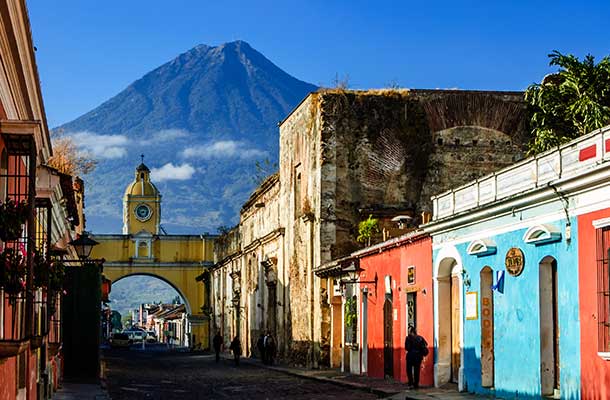
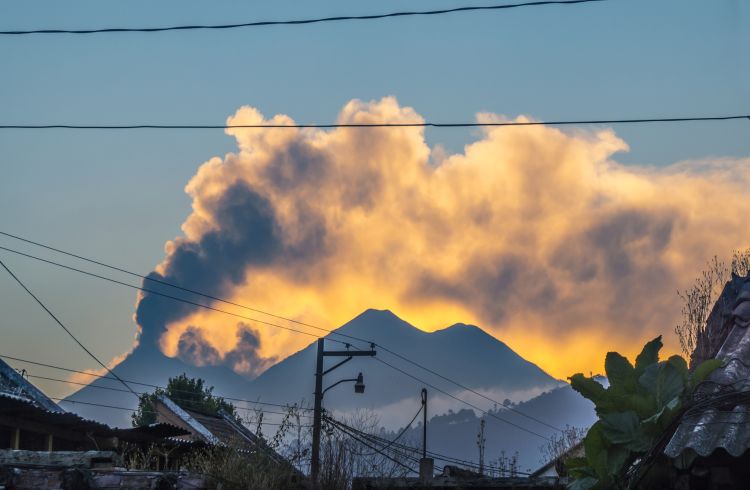

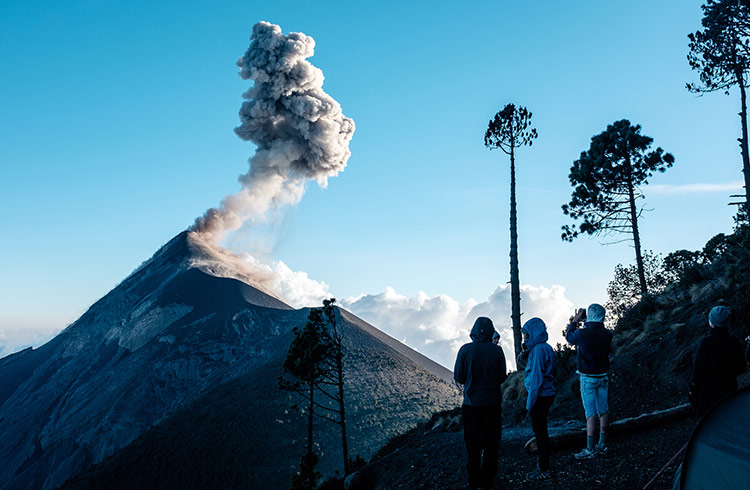
No Comments